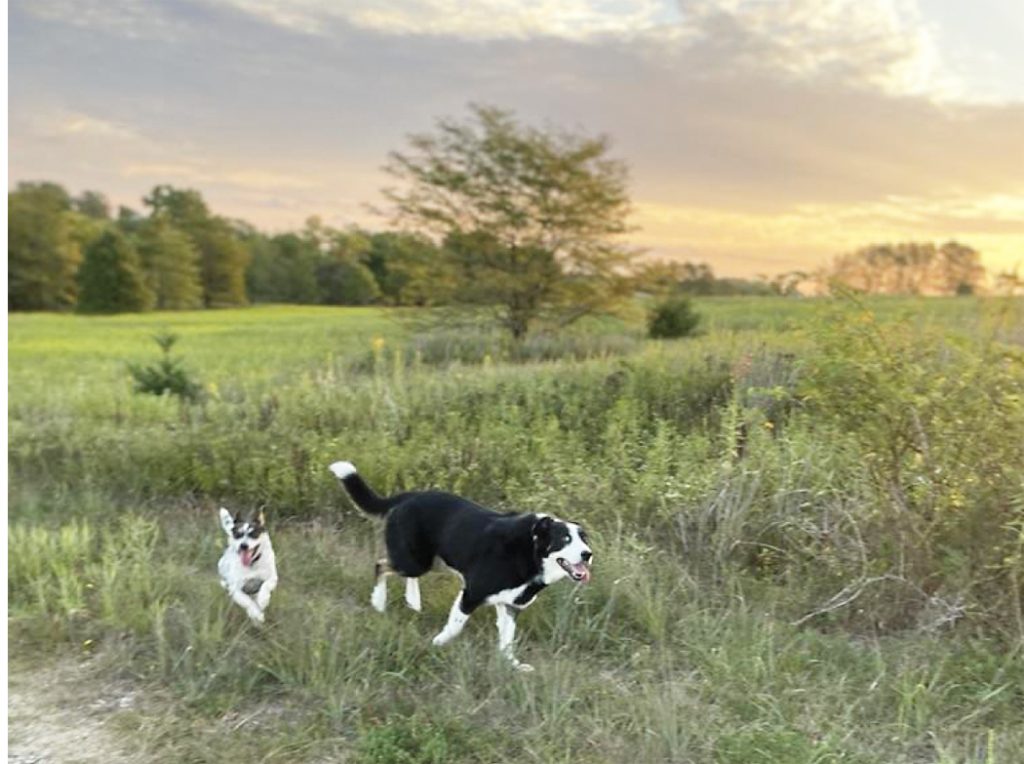
My dogs, and most dogs I know, are eager to be out in all weather. It’s hard to agree with them in February, but when I open the door in May, shoulders up to my ears braced for cold, I am melted by soft perfumed air. It’s time to get back outdoors with my best furry friends. But first, let’s go over the basics of taking your dogs with you when you head outdoors.
The Warm-Weather Essentials
- Never leave dogs in the car. By May, it is no longer safe. Even with the windows cracked, the car will heat up too fast. Plan to have your dogs with you at all times.
- Bring water. Keep plenty of water and a water bowl in the car. Make sure your dog has frequent access to water. Iowa is blessed with an abundance of streams and ponds that make it easy for dogs to drink, wade, and wallow without going off trail at most local parks. If you will be somewhere dry or prefer your dog not drink au naturel, bring along a collapsible bowl and easy-to-carry water bottle.
- Always bring a towel. Speaking of wallowing, bring at least two towels per dog. Fluffy dogs are extra absorbent, and even short-haired dogs can soak up a surprising amount of water in their plush coats.
- Fanny packs save the day. I could write an ode to the fanny pack! It’s the oversized pocket I’ve always yearned for. A washable fanny pack with more than one compartment is a gem. It’s just the right size for your cell phone, keys, treats, and a roll of poop bags.
- Choose your leash well. Bring the right gear for the situation. A trainer can help you select the best collar, harness, or halter. I prefer short cloth leashes for trail running and higher traffic public spaces. Long “zippy” leashes, as my nephews call them, are great for relaxed walks in wide open areas when I want my dogs to be able to stop and smell the, well, everything!
For safety’s sake, make sure everything fits securely, and that you can quickly shorten or lengthen the leash.
Pro tip: Do a poop walk before the real adventure.
Hitting the Trails
Southeast Iowa’s trails beckon with a new wave of wildflowers and leaves popping open each day. Whether you visit the slopes of Brinton Timber along the Skunk River, Fairfield’s 16-mile loop trail, Washington’s Kewash Nature Trail, the old railroad route along Cedar View Trail, lush Lacey Keosauqua State Park, or Bentonsport’s riverside, you can’t go wrong. Whatever your speed, your dog will be delighted to join you. A leisurely saunter allows ample time to sniff.
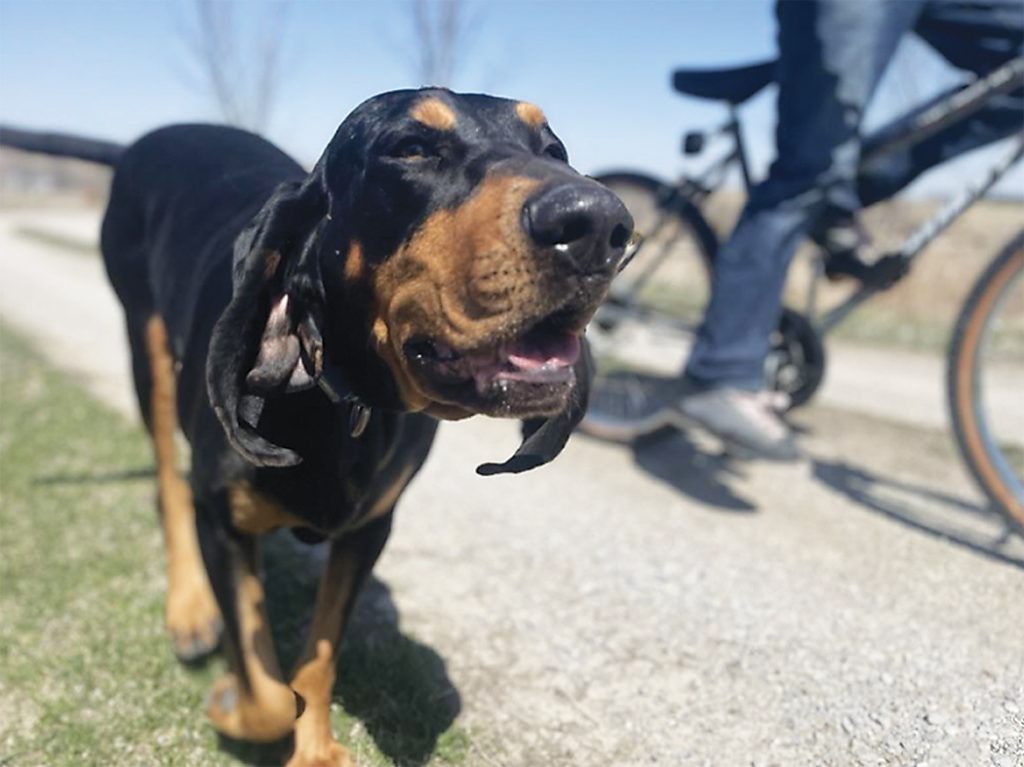
When you hit the trails, start by figuring out a comfortable warm-weather pace for everyone. Some high-energy dogs love racing alongside four-wheelers in the countryside, tongues flapping in the breeze, and many dogs enjoy keeping pace with a leisurely bicycle speed. My friend Jennifer says, “Our fave is bike riding for sure!” Her pup is more than happy to keep up.
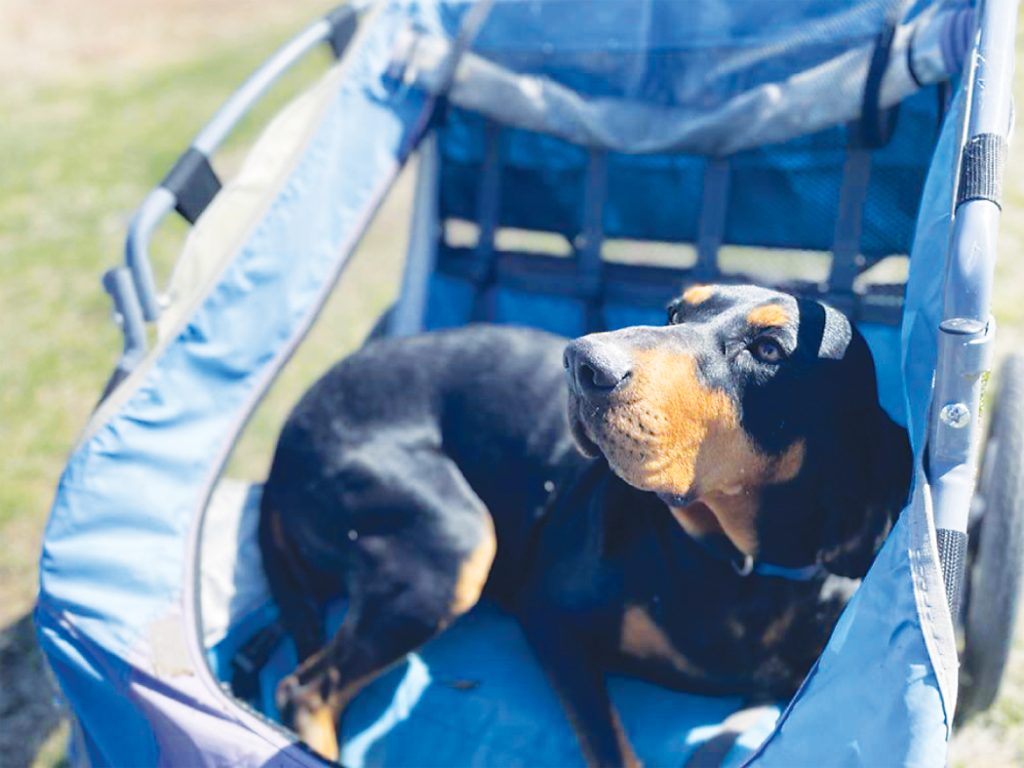
My brother, on the other hand, quickly found out that his furry couch potato prefers napping in her kiddie trailer for longer excursions.
My run is barely a trot for my dogs, but even so, when it gets hot outside, they simply don’t have the endurance that I do. During warmer weather, it’s crucial that we go out early in the morning or later in the evening for anything faster than a stroll, and stop regularly at ponds and creeks so the dogs can wallow and cool off. In public spaces, I keep everybody leashed, and the slowest animal (usually me!) sets the pace.
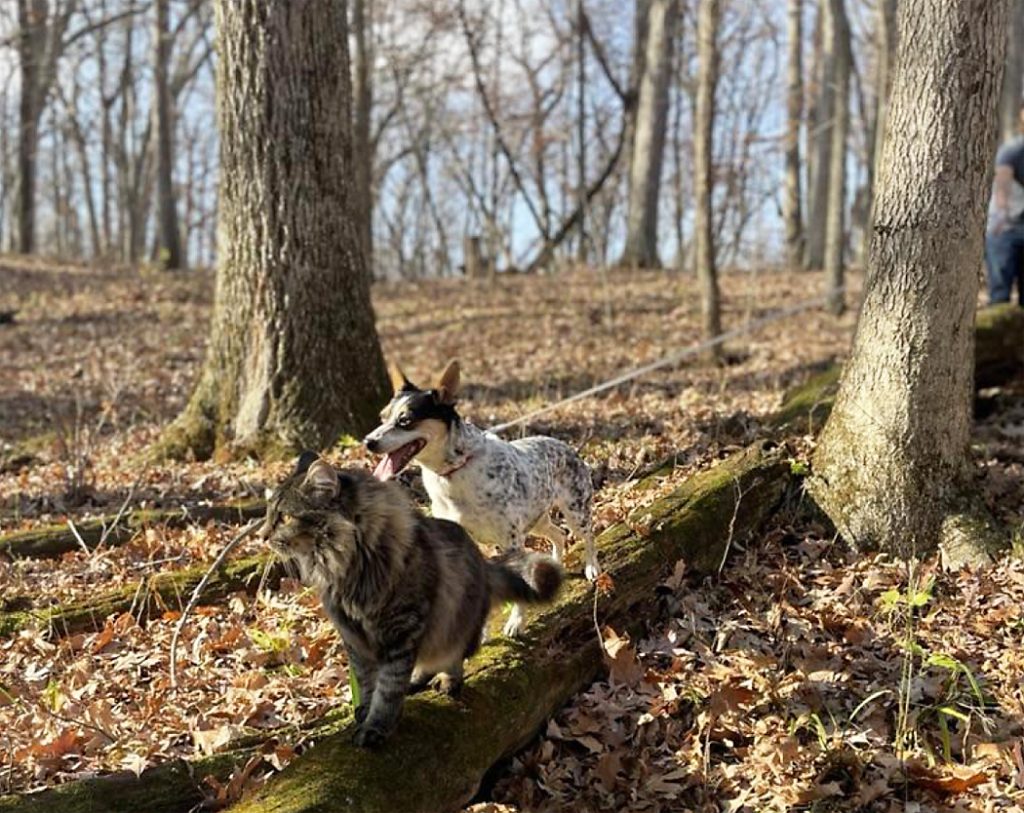
But at friends’ places where we are allowed to run freely, my two dogs, cat, and I all happily go our own speeds. My younger dog zooms about, my cat grazes and sharpens her claws, I get to walk briskly and study plants, and my 11-year-old border collie keeps track of us all. When it’s time to pick up the pace and move as a unit, my cat goes in her backpack carrier and the dogs leash up.
There’s absolutely no reason everyone has to go the same speed to have a good time together. Figure out your happy speed. If your dog is slower, try putting them in a bike trailer or stroller. If your dog is faster (more often the case), give them a chance to get their zoomies out before your walk. Frisbee, fetch, swimming, or playing with other dogs can all help them meet their exercise needs so that walks are a time to relax and take it slow. Consider training your dog to run alongside a small vehicle off leash, such as a motorized bike or a four-wheeler, if you can do so safely.
The Art of Doing Nothing
Easy Dingo trainer Will Steingreaber recommends taking the time to simply sit still in unfamiliar places for 10–15 minutes and reward relaxed behavior. I call this practice “squirrel zen.” Squirrels in city parks and on trees along sidewalks can be unbearably close, and my dogs can be frustrated at first and whine or tremble with excitement. One squirrel by the Jefferson County Courthouse made a point of climbing onto the branch directly over our bench, spreading out on that branch with his little paws folded, and staring down at us until we decided to leave.
Even with such temptations, my dogs invariably sit or lie down of their own accord after a couple of minutes. They silently fixate, staring into the tree. Then they give up, and look in a different direction, or even remember that I exist and look at me. It’s a psychological workout rewarded by praise, treats, or another scent-filled walk and—look … more squirrels!
Water Sports
My dogs don’t like to wade in past their armpits, but many of their buddies love nothing better than a swim. Retrievers and bird dogs especially love water fetch. My cousin’s lab Tucker is an infamous pool monster who will hound visitors to throw his favorite toys so he can leap into the water with a glorious splash and swim the full length back, snout held high with his precious catch. Kids and adults are delighted to humor him.
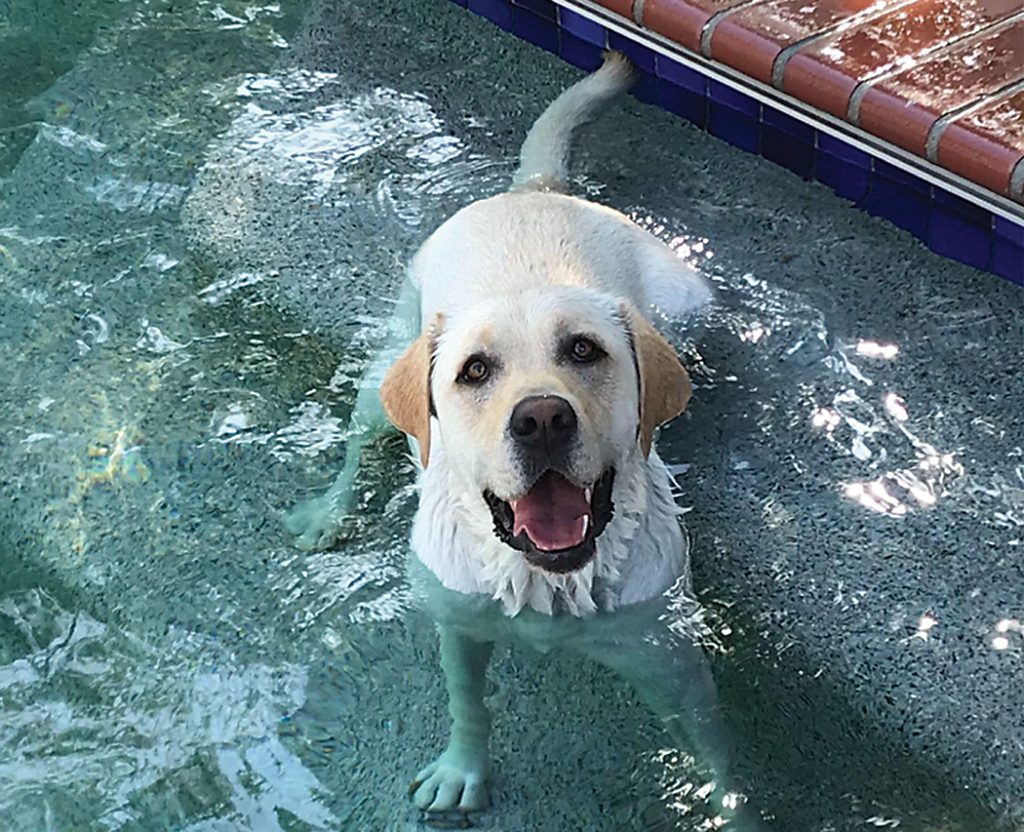
My friend Wendy Loving is an avid outdoorswoman who wouldn’t dream of leaving her pup out of the fun. “It was great to see the confidence level of our dogs skyrocket when we provided them with nicely fitted life jackets,” Wendy says. “They go from swimming for 10 minutes to never wanting to get out of the water.” Wendy’s dog Diesel rides in the kayak between short swims, snug in his doggy life vest with a handle or long rope leash so his people can help him out if he gets tired.
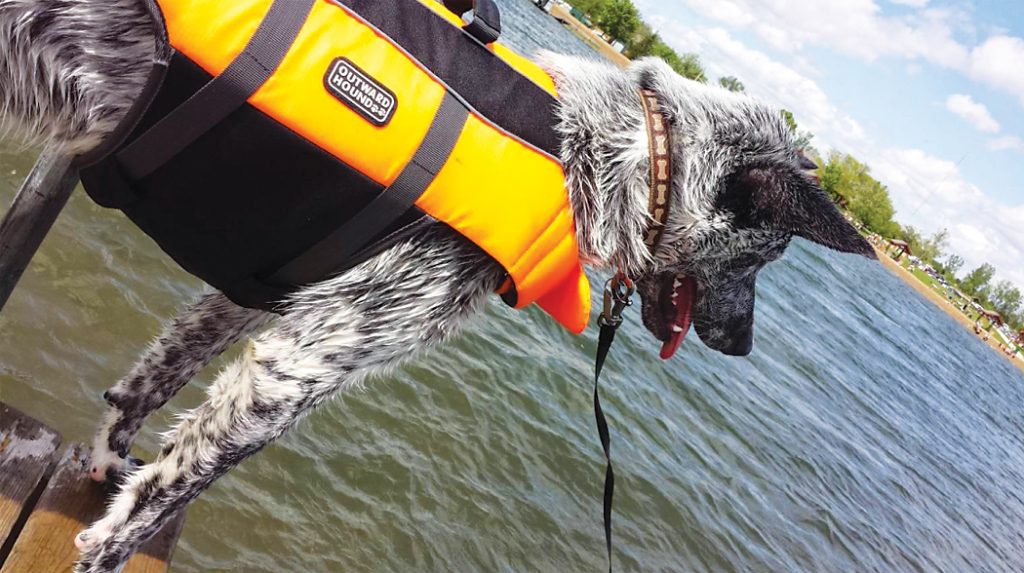
Wendy shared the following tips for safe kayaking and canoeing adventures:
- Always look for signs around the water source for water quality warnings, such as algae bloom. These can be very toxic to your puppers. If it looks like an oil sheen on the water, stay out of that area.
- Check water levels and current before hitting the creeks. If it has rained recently, the current may be too strong, and debris such as downed trees may be an issue.
- Be familiar with the area. Scout it out before taking your four-legged friends.
- If you’re entering deeper water where your dog cannot touch bottom, provide them with a life jacket. It should have sturdy handles so you could pick up your dog if needed.
- Always have enough fresh water and snacks for both you and your furry family.
- Recall is a must if your dog is off leash. Reliable recall means you’re sure your dog will come to you when called.
- Frequent stops on the way home for potty breaks are a must. They are splashing around having fun and consuming more water than you realize.
- Look for signs from your dog that they are enjoying the experience. Be sure to give them frequent breaks from swimming and running along the shore to rest.
Mind Your Manners
I’m sure that you, Gentle Reader, are not the kind of sociopath to desecrate public walkways with abandoned turds. No, you are the white knight who always has extra bags or at least a good stick to clean up after underprepared dog walkers.
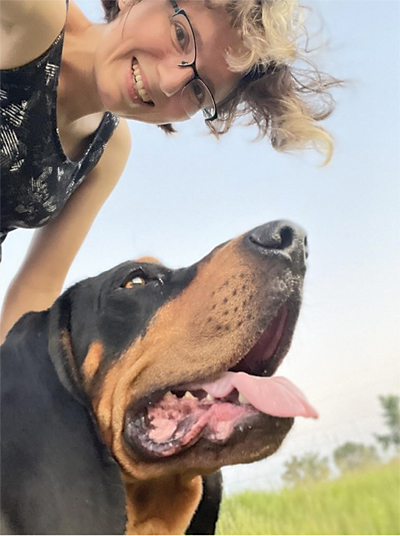
If you’re not from these parts, it’s time someone told you about the Iowa wave. Usually done while driving, the Iowa wave consists of raising two or more fingers and nodding. When you’re out on foot, it’s polite to smile and make brief eye contact. Whether paddling your kayak alongside your furry friend or racing down a gravel road with leash in hand, remember your Iowa wave.
Now you’re ready to get out there, smell the lilacs, and follow the bunny trails with your best friends.
